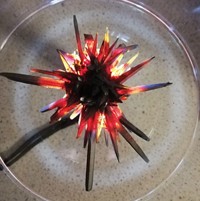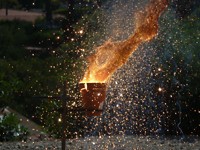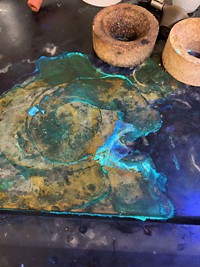Advertisement
Grab your lab coat. Let's get started
Welcome!
Welcome!
Create an account below to get 6 C&EN articles per month, receive newsletters and more - all free.
It seems this is your first time logging in online. Please enter the following information to continue.
As an ACS member you automatically get access to this site. All we need is few more details to create your reading experience.
Not you? Sign in with a different account.
Not you? Sign in with a different account.
ERROR 1
ERROR 1
ERROR 2
ERROR 2
ERROR 2
ERROR 2
ERROR 2
Password and Confirm password must match.
If you have an ACS member number, please enter it here so we can link this account to your membership. (optional)
ERROR 2
ACS values your privacy. By submitting your information, you are gaining access to C&EN and subscribing to our weekly newsletter. We use the information you provide to make your reading experience better, and we will never sell your data to third party members.
Lab Safety
Chemistry In Pictures
Chemistry in Pictures: Lurking in the corner
by Craig Bettenhausen
March 15, 2022

Cleaning out the corrosives cabinet isn’t many people’s favorite lab chore, but after finding this decomposing container of hydrobromic acid (HBr), Mark Olson was glad his group got around to it. Olson is a chemistry professor at Texas A&M University-Corpus Christi, where he researches soft matter, nanoscience, and supramolecular chemistry. Glass reagent bottles are sometimes shipped in steel cans like this, surrounded by padding. “I am not sure how long the bottle sat there,” he says. “It was sitting towards the back behind a much larger bottle of another substance, easily out of view. What became clear once we began to clean it up was that the bottle inside the unopened can had somehow ruptured and was leaking,” he says.
The brown material is iron bromide (FeBr2), a relatively benign substance that formed as the acid leaked and reacted with the steel container. And the cabinet was properly vented, Olson says. Nonetheless, Olson says, they carefully moved the whole mess into a fume hood, took it apart, and disposed of everything in appropriate hazardous and chemical waste containers. In this case, the can corroded from the inside out, Olson says, but because other chemicals in the corrosives cabinet react with steel, whoever took delivery should have opened the can and placed just the bottle of reagent in with the others. “Opening the can immediately after delivery to the lab might have shown that the bottle cap had failed,” he adds.
Credit: Mark A. Olson @MARK_A_OLSON on Twitter
Do science. Take pictures. Win money. Enter our photo contest here.





Join the conversation
Contact the reporter
Submit a Letter to the Editor for publication
Engage with us on Twitter